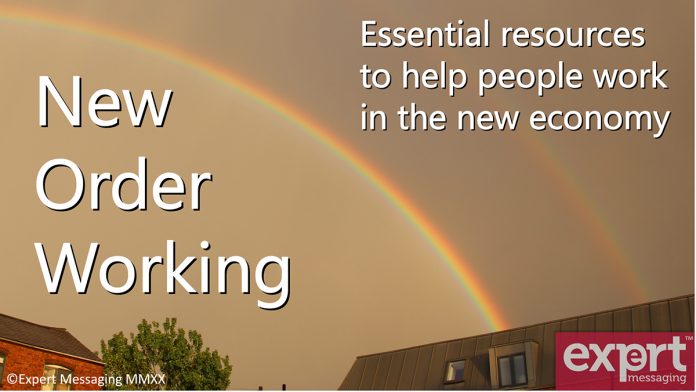There has been a paradigm shift in the workplace, and here, Bob Hallewell explains how to approach New Order working
The COVID-19 lockdown has produced a New Order that will echo down the years. We are all trying to stay afloat with the wave of the future towering above us. We have three choices: drown, hope the wave is not too overwhelming, or learn to surf. I think we should learn to surf – and in this article, I will lay out some areas that organisations need to consider in order not to drown with a pointer to some useful resources that can act as a buoyancy aid.
What is the New Order?
There are two dimensions. Firstly, the economy must cope with the billions of pounds of debt built up dealing with the pandemic. Austerity resulting from the 2007 crash was bad enough and we are now looking at a financial impact that is magnitudes greater. The public sector is yet again having to do even more with even less.
Secondly, we need to manage the continuing issues arising from social distancing.
Obviously not everyone can work from home: front-line staff, for example, do not have this opportunity. However, white-collar staff will continue to be encouraged to work from home. This helps social distancing by having fewer people in offices and fewer people commuting. It can also bring savings by reducing the need for office space. To cope with the paradigm shifts of the new work environment, people will need to develop new skills and enhance existing ones. This is New Order Working. So, what are the main issues?
Environment
First and foremost, we must get the environmental factors right. Everyone should know about safe home working and setting up a healthy workstation. Productivity seems to be higher for people working from home, but this should not be exploited. Everyone needs to understand how to set clear boundaries between “work” and “not work”. If they never switch off, they will burn out. Furthermore, who is going to pay for the higher electricity bill and computer consumables?
Managing remotely
Gone are the days of keeping a “weather eye” on someone’s progress with a task. We can no longer stroll over to someone’s desk for a chat or catch up with colleagues by the water cooler. On the plus side, the old scourge of “presenteeism” has faded.
We will need to set tasks and timescales and schedule times for checking in. We cannot necessarily expect remote workers to stick to a 9 to 5 schedule, however, we will need to ensure their deliverables turn up when they should. It is important to consider how to build team spirit remotely – and help people deal with their personal issues such as setting clear boundaries and maintaining focus.
Standards
Setting and maintaining standards are critical. Organisations should be clear about their expectations in order to promote professional and effective working. This is not an exhaustive list but gives an idea of the areas where expectations should be set.
Choosing the right medium for the right message and audience
We have many ways to communicate with each other these days: phone, Instant Messaging, SMS, email, Zoom, Teams, intranet, status updates – let alone face-to-face (those were the days!) They are all constricted media with their own characteristics, and they are all good for some kinds of message yet bad for others. For example, brainstorming by email or a disciplinary by SMS are both very poor choices of medium.
As a rule of thumb, if you are finding it hard to write an email, it is probably the wrong medium. Help people work and communicate effectively by setting standards and guiding their choices.
Zoom etiquette (other video conferencing software is available)
By now I am sure we have all been on the receiving end of poor Zoom meetings: people speaking at once, not muting background noises, disturbing activity in the background…
All the problems of face-to-face meetings can be exacerbated by poor etiquette. Given this is such a critical way to communicate these days, it is essential to spread good practice around the organisation. One simple and effective tip is for people to raise a hand if they would like to speak. It is visual, it is obvious what the person wants, and it avoids a lot of clashing and talking over each other.
Email etiquette at work
The ability for email to be a sink of people’s time and energy continues, therefore it is essential to have response standards in place and manage people’s expectations. Moreover, it has an increasing role as the “public face” of an organisation so a consistent presentation of style is ever more important.
Legal issues
There is still a tendency to downplay the significance of electronic means of communication. Somehow, they are treated as less serious – which makes it even more important to get everyone up to speed on the legal aspects of email, IM, and other media. As a starting point, if everyone understands their message is official, potentially public, and permanent that will prevent a lot of legal problems and expense.
Resources
At Expert Messaging we want to “do our bit” and help the public sector get back on its feet. Our New Order Working programme presents clear guidelines in a simple way to give people coping strategies – and we are offering a serious discount to the public sector.
If you’d like to know more, please send an email to new.order@expert-messaging.com and we’ll help you surf that wave.
Please note: This is a commercial profile











